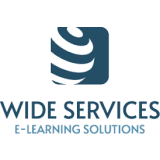This informal CPD article is Part 2 of the “Individual learning” provided by Vasilis Palilis director of WIDE Training Academy of the WIDE Services company.
Neuroscience View of Learning
In these articles, we examine some of the "old" learning theories with emphasis on the points that have been confirmed by the newer ones. The article has 2 parts.
1. In the first part, "Old learning theories", we briefly discuss the approaches of Behaviorism, Cognitivism, and Cognitive constructivism.
2. In the second part, "Neuroscience View of Learning", we explore the newest theory of how we learn.
Let’s focus on the 2nd part.
What is Neuroscience?
The human brain is like a coordinator of our whole body. A unique organ that controls every function of life. From breathing and blood circulation to movement and emotion. It controls the immune system's response to diseases, shapes our thoughts, beliefs, motivations, fears, dreams, and imagination. In learning, it is brain functions that allow us to learn new knowledge and skills, remember what we have learned, and recall it when we need to apply it.
Neuroscience is the science that studies the human brain and the nervous system. Neurons are the basic structures of the brain. We have about 100 billion of them interconnected. Each neuron has the potential to connect with tens of thousands of other neurons. That means thousands of trillions of possible connections can be activated every second.
In recent years, neuroscientists have applied fMRI technology, which allows them to visualize the firing functions and see exactly what these billions of neurons are doing at any given moment. They are discovering which parts of the brain are activated when we feel emotion when we act in a certain way. They can see what happens in the brain when we learn or remember.
Neuroscience and Learning
It is striking that neuroscience confirms many points of pedagogical theories on Teaching, Learning and Learning Design. Of course, in the early phases of the development of neuroscience, various topics were approached in ways that later proved to be wrong, creating various 'neuromyths' that still survive as myths.
Dr. Julia Sperling, McKinsey partner and neuroscientist, debunks several myths attributed to Neuroscience and focuses on the key lessons learned about learning and leadership development.
- You can use almost all of the capacity that your brain has, not only 10%!
- There is not a left and right brain that functions completely separately and differently, but you might have a certain channel through which you learn better (visual or auditory learners) while you actually use as many channels as you can.
- There are no windows of learning that when they're closed, they have no chance to be reopened again, there's neuroplasticity so at every point in your life you are actually able to learn, refine, or add new capabilities to your set of existing functions.
- You can learn anything but it matters how mindful you are about it, how ready you are to take a new knowledge.
- Also, mindset matters, if you have a growth mindset, you believe you can learn anything, then you will!
- Attention is very important in learning. The big mistake that is often being made is that we multitask, if you do multiple things your attention will switch, you're not able to hold the right amount of attention required to capture the learning.
- Practicing and applying your learning reinforces and connects the process with other experiences.
- Another thing is the desire to learn. If you enjoy learning, will boost the outcomes significantly.
- Positive feedback along the learning journey accelerates the process.
The AGES model for Learning
The AGES learning model is also based on neuroscience. The components for learning are:
- Attention. The more attention we pay to incoming information, the stronger our memory and the easier it will be to recall this information in the future.
- Generation. Memories are stored in the brain with multiple connections. The more interfaces associated with a memory, the easier it is to recall that memory.
- Emotions. The right level of emotional arousal helps students pay attention and concentrate.
- Space. Spreading learning over time rather than compressed time-based learning helps students maintain optimal levels of attention and creativity throughout the learning process. These, in turn, enhance memory and recall of learning.
It is certain that neuroscience provides us with the certainty of Natural Science. The neuroscience based learning theories support us in the creation of solid educational approaches and the AGES model is integrated into current educational practices making them more valid.
However, we should also point out the fact that the findings of older learning theories, based on less scientific data, are incorporated in the newer theories. Some examples of these are the importance of feedback, the pre-planned organized instructional procedure and the creation of a positive environment.
We hope this article was helpful. For more information from WIDE Services, please visit their CPD Member Directory page. Alternatively please visit the CPD Industry Hubs for more CPD articles, courses and events relevant to your Continuing Professional Development requirements.













